
In the current environment of heightened market volatility and unpredictability caused by evolving tariffs and interest rates, the need for rapid stress testing at the firm level has re-emerged with urgency.
This circumstance is not unique – a similar necessity arose amid the COVID-19 pandemic and the regional bank crisis of 2023. However, unlike those recent crises, the current situation presents much greater uncertainty. Consequently, there is stronger need to find a tool that can effectively and quickly analyze the impact of market-altering events.
What are rapid stress tests? How have tariffs triggered the urgency to adopt them, and what steps can firms take to implement them properly?
The Tariff Conundrum
Tariffs increase macro uncertainty, complicating rate path projections. That’s why experts are calling for firms to prepare for a wide range of scenarios.
Alla Gil
On the one hand, tariffs will cause price increases, so the Federal Reserve might raise interest rates to curb inflation. On the other hand, a potential recession (the probability of which is now close to 50%) could push the Fed toward reduced interest rates in support of the economy.
The impact of this uncertainty on firms’ liquidity can also vary. Declining markets and ongoing volatility might cause a panic selloff, reducing overall savings. However, these factors could also potentially fuel a “flight to safety,” with money from sold stocks flowing into banks’ deposits.
The demand for loans may not keep pace with the inflow of deposits, potentially leading banks to allocate excess cash into held-to-maturity securities – just as they did during the regional bank crisis. Depositors, meanwhile, could withdraw funds if inflation takes another leap and if prices increase faster than earnings.
Sufficient amounts of capital and liquidity are critical for financial institutions to survive such uncertainty. Firms typically perform rapid stress tests, specific to their balance sheets and strategy, to determine the appropriate level of such a cushion.
The Issue with Conventional Tests
Large organizations usually perform these rapid tests bottom-up – but, problematically, they can take weeks to produce the results. There are several reasons for so-called “rapid” stress tests to be so slow.
First, in a stressful environment, regression models built on data from stable, stationary markets aren’t going to produce reliable results, because data during turbulent times is extremely non-stationary.
Second, in traditional stress testing, modelers typically examine a standard set of potential scenarios — such as recession, inflation, stagflation, and the Fed’s possible responses to these outcomes. However, this set is often limited to just six to 12 scenarios. As a result, there's always uncertainty about which critical scenarios might be overlooked and the significance of those omissions.
Third, each one of these scenarios will require several manual overlays, because standard regressions might fail (see reason 1).
That said, properly implemented rapid stress tests offer a potential solution to these problems.
The Need for a Comprehensive, Top-Down Approach
To achieve both speed and rigor in quantifying outcomes, such rapid stress tests should be performed top-down, as we’ll discuss in more detail in a minute.
Given that it’s been close to 100 years since we’ve seen the type of major trade wars that are unfolding today, the precedents for modeling current scenarios are not obvious. However, there are narratives similar to those that unfolded during the COVID-10 pandemic, including increased cost of goods and supply-chain disruptions.
Indeed, we can use these outcomes (which ultimately yielded significant inflation) as a proxy of what the initial shock reaction to rising tariffs could look like. It’s important to remember, however, that the initial reaction is likely to set off an avalanche of subsequent effects that may vary dramatically – with respect to their impact on firms’ liquidity and resilience.
A productive rapid stress test should be based on multi-scenario, multi-trigger dynamics, blending top-down macro narratives with firm-specific overlays. As we have seen previously, it is futile to assign specific names to these shocks – but it is nevertheless crucial to prepare for all possible outcomes.
When we generate a full range of scenarios that factor in supply-chain disruptions, inflation shocks and a potential recession, we see the significance of trade wars across multiple sectors.
Let’s now consider how evolving tariffs could impact three major business lines: commercial and industrial loans, consumer loans, and single-family residential mortgages. We can begin by linking the historical time series of their charge-off rates of these sectors (provided by Federal Reserve’s economic database) to macroeconomic and market scenarios.
Losses in residential mortgages depend mainly on credit spreads and housing prices. Consumer loans and commercial and industrial loans, meanwhile, depend primarily on credit spreads and interest rates – but the latter is also driven by international macroeconomic factors, like the performance of Asian markets.
If we generate the full distribution of macroeconomic scenarios with all combinations of shock events (including rising tariffs), and analyze their ripple effects over the next three-year horizon, we can access the probability of a recession. If we define it as at least three consecutive quarters of declining GDP, the implied probability of a recession grows from 31% in the first year to 45% in year three.
On average, across the three-year horizon, the charge-off rates increase moderately in all three segments. However, when we analyze the 99th percentile of the highest losses in the considered business lines, our exhaustive reverse stress test reveals three scenarios where all the segments exhibit a substantial increase in charge-off rates: (1) a recession, followed by inflation; (2) early recession and prolonged stagflation, followed by inflation; and (3) recession and inflation with continued yield curve inversion.
Figures 1, 2 and 3 depict the behavior of the three loan segments’ charge-offs, as well as their respective yield curve shapes on the three selected scenarios.
Figure 1: Recession, then Inflation
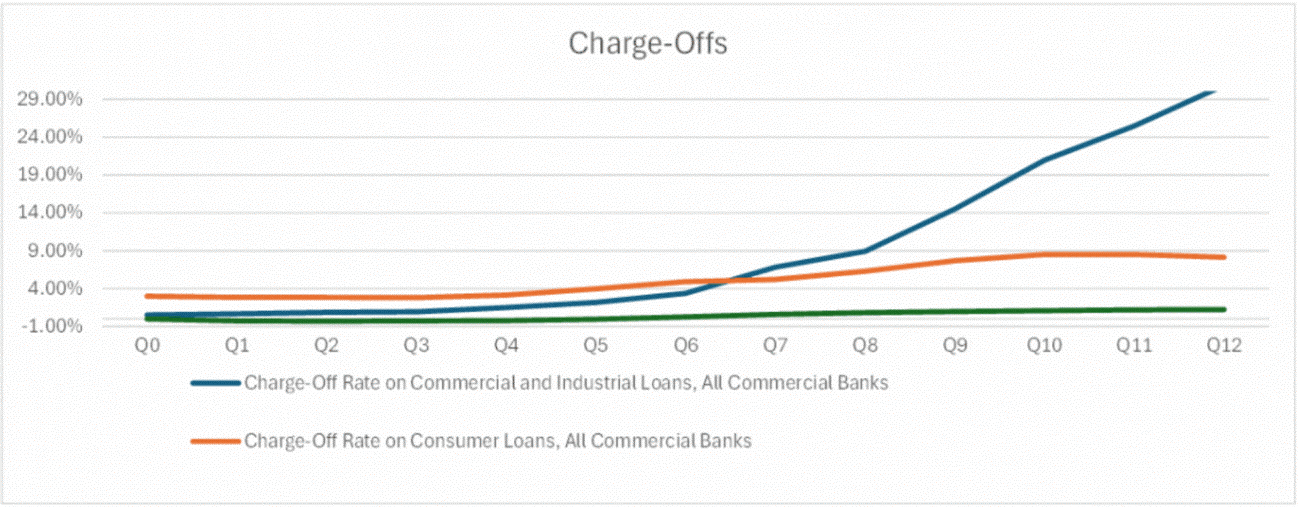
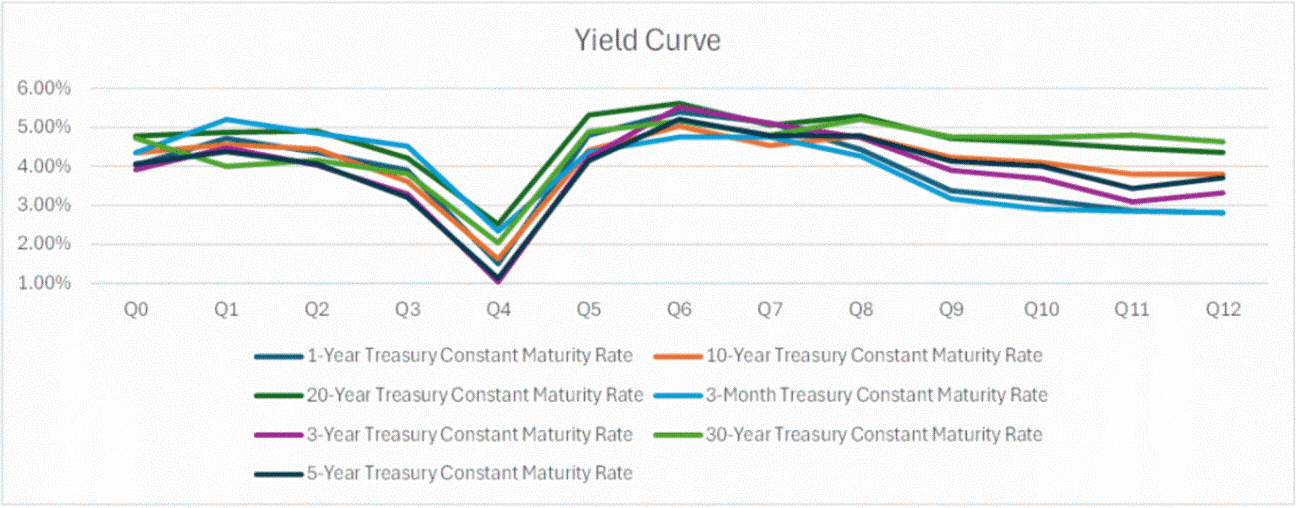
Source: Straterix
Figure 2: Recession and Stagflation, Followed by Inflation
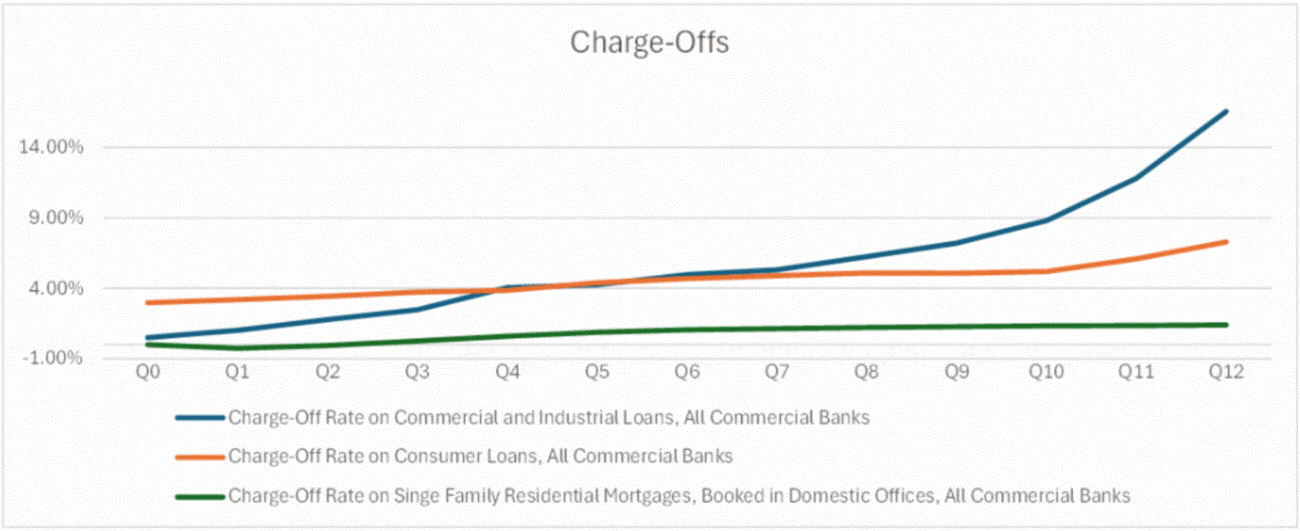
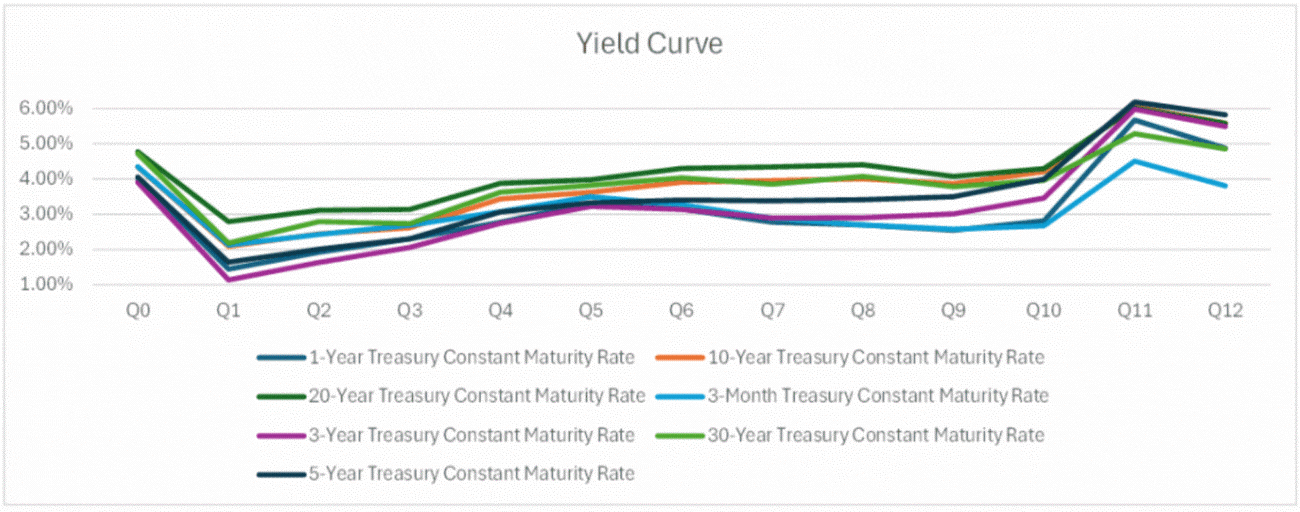
Source: Straterix
Figure 3: Recession and Inflation with Yield Curve Inversion
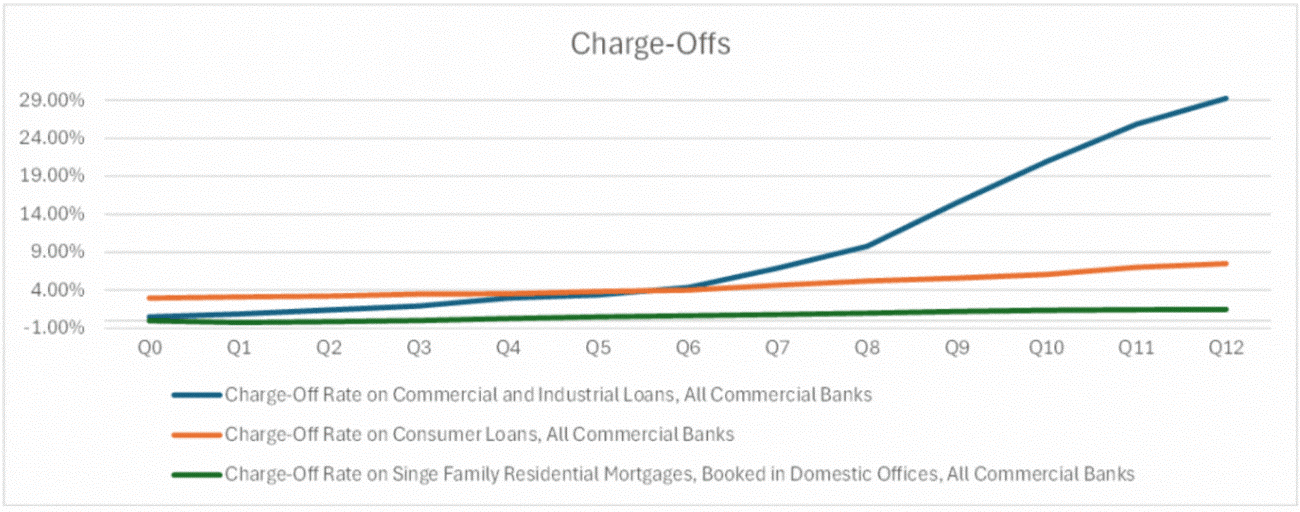
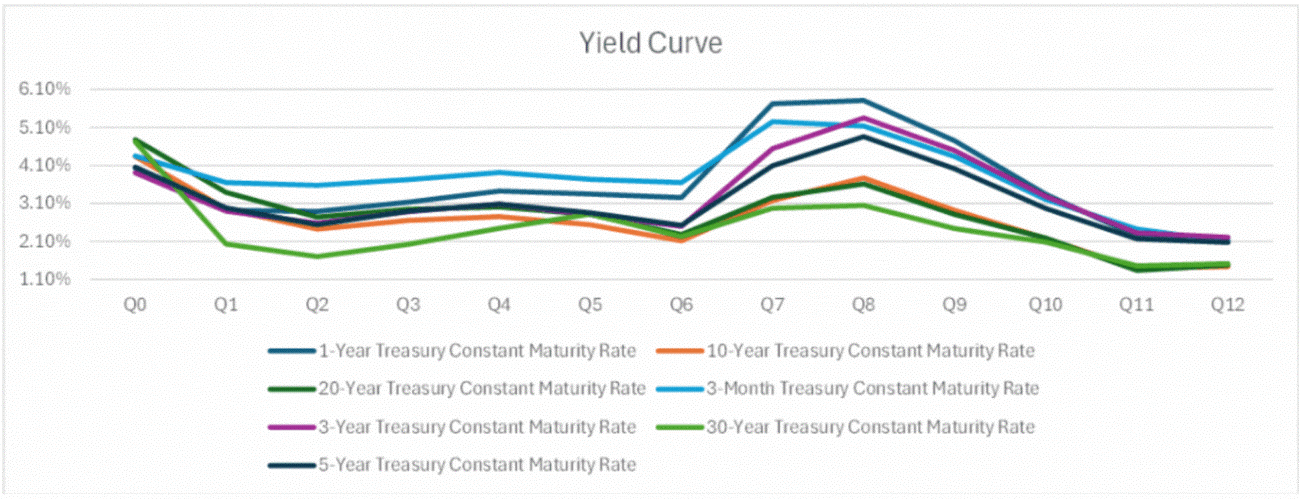
Source: Straterix
All three charts show that in the referenced market environments, the three loan segments considered will have increased charge-offs. Commercial and industrial segments show the sharpest increase – up to an order of magnitude. Losses for consumer loans, meanwhile, triple, while residential mortgages grow moderately.
Figure 4 shows the macroeconomic and market environment characteristics for these outcomes.
Figure 4: Dissecting the Macroeconomic Environment
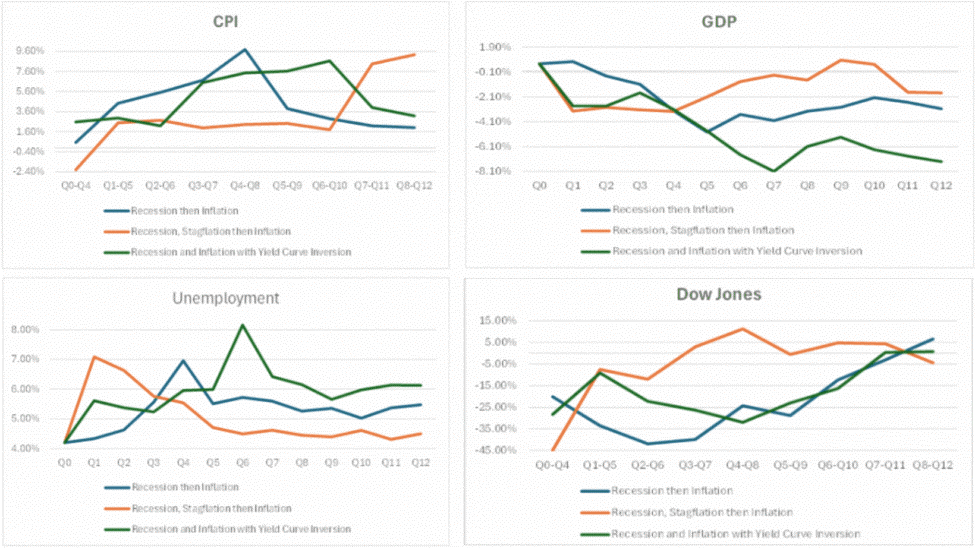
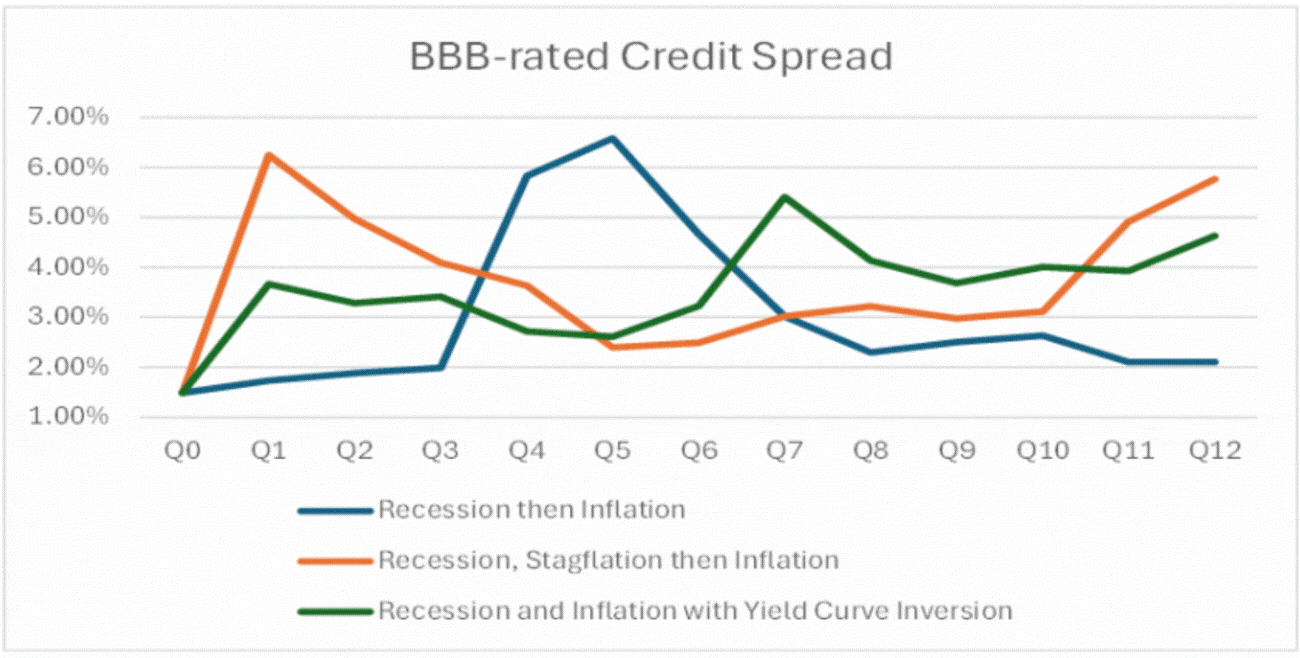
Source: Straterix
While the charge-off segments are aligned on all three scenarios, the macroeconomic environment of each is quite different. So, it’s important for each organization to discover their own stress scenarios, and to prepare for all of them, based on reverse stress tests.
Parting Thoughts
It is critical for both buy- and sell-side risk managers working in commercial and industrial loans, consumer loans, and single-family residential mortgages to understand charge-off rates. Banks, after all, have a substantial part of their loan portfolios in these sectors, while asset managers invest in private credit performance – a segment closely connected to these sectors.
Our performed analysis demonstrated that the top-down approach to stress testing allows firms to discover the most relevant scenarios for which they need to be prepared. To finetune these scenarios and to avoid systemic bias, supervisors and financial institutions should perform rapid, firm-specific stress tests on tariffs data.
Alla Gil is co-founder and CEO of Straterix, which provides unique scenario tools for strategic planning and risk management. Prior to forming Straterix, Gil was the global head of Strategic Advisory at Goldman Sachs, Citigroup, and Nomura, where she advised financial institutions and corporations on stress testing, economic capital, ALM, long-term risk projections and optimal capital allocation.